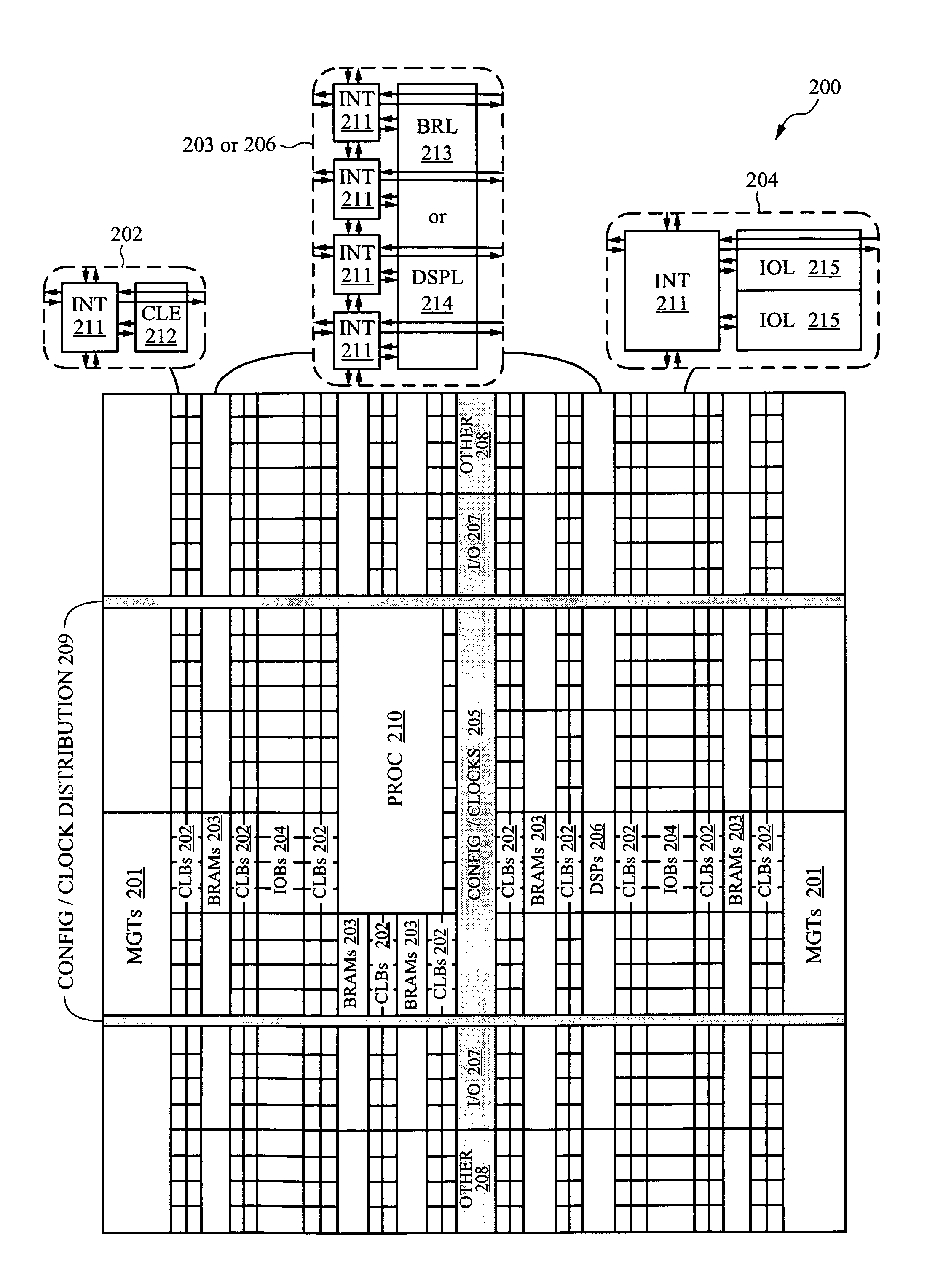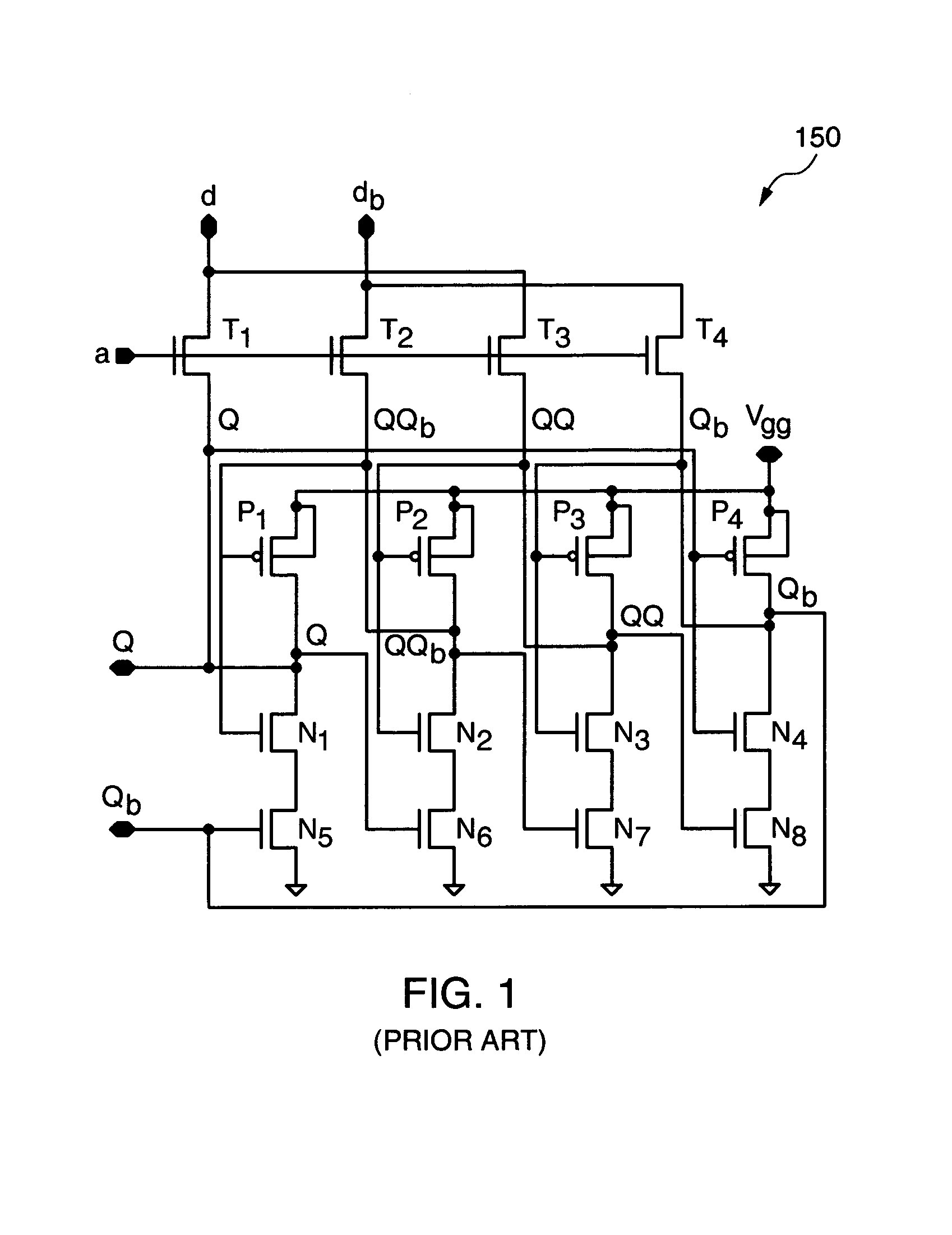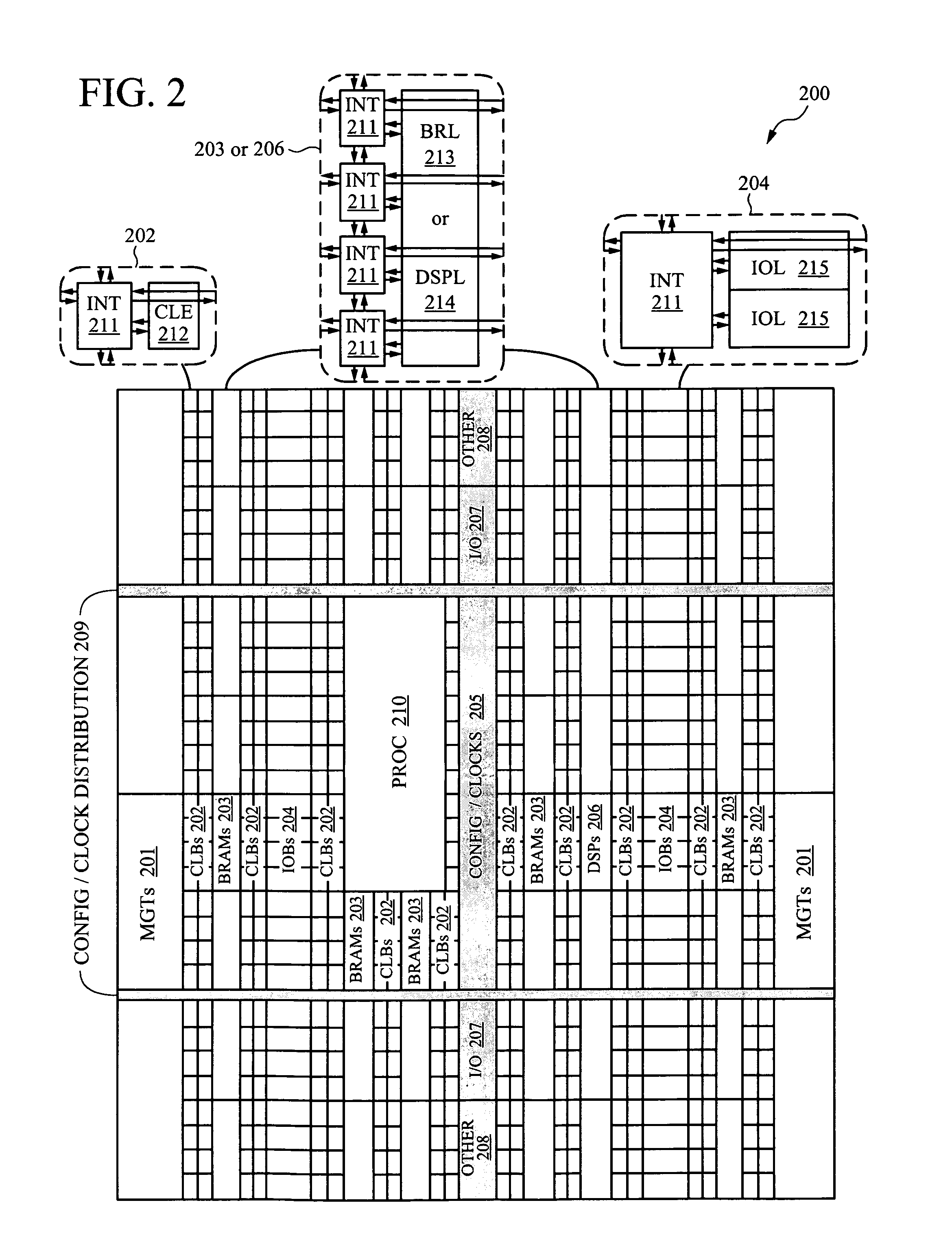Interleaved memory cell with single-event-upset tolerance
a memory cell and tolerance technology, applied in the field of complementary metaloxidesemiconductor (“ cmos”) memory cells, can solve the problems of significant deformation of latch performance, upset data value stored at a node, and memory cell layout appropriate for a larger technology design dimension (e.g., 90 nm technology) might not provide adequate seu toleran
- Summary
- Abstract
- Description
- Claims
- Application Information
AI Technical Summary
Benefits of technology
Problems solved by technology
Method used
Image
Examples
Embodiment Construction
[0028]FIG. 2 illustrates an FPGA architecture 200 suitable for implementing embodiments of the invention. The FPGA architecture 200 includes a large number of different programmable tiles including multi-gigabit transceivers (MGTs 201), configurable logic blocks (CLBs 202), random access memory blocks (BRAMs 203), input / output blocks (IOBs 204), configuration and clocking logic (CONFIG / CLOCKS 205), digital signal processing blocks (DSPs 206), specialized input / output blocks (I / O 207) (e.g., configuration ports and clock ports), and other programmable logic 208 such as digital clock managers, analog-to-digital converters, system monitoring logic, and so forth. Some FPGAs also include dedicated processor blocks (PROC 210).
[0029]In some FPGAs, each programmable tile includes a programmable interconnect element (INT 211) having standardized connections to and from a corresponding interconnect element in each adjacent tile. Therefore, the programmable interconnect elements taken together...
PUM
 Login to View More
Login to View More Abstract
Description
Claims
Application Information
 Login to View More
Login to View More - R&D
- Intellectual Property
- Life Sciences
- Materials
- Tech Scout
- Unparalleled Data Quality
- Higher Quality Content
- 60% Fewer Hallucinations
Browse by: Latest US Patents, China's latest patents, Technical Efficacy Thesaurus, Application Domain, Technology Topic, Popular Technical Reports.
© 2025 PatSnap. All rights reserved.Legal|Privacy policy|Modern Slavery Act Transparency Statement|Sitemap|About US| Contact US: help@patsnap.com



